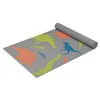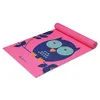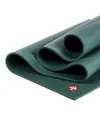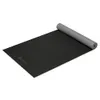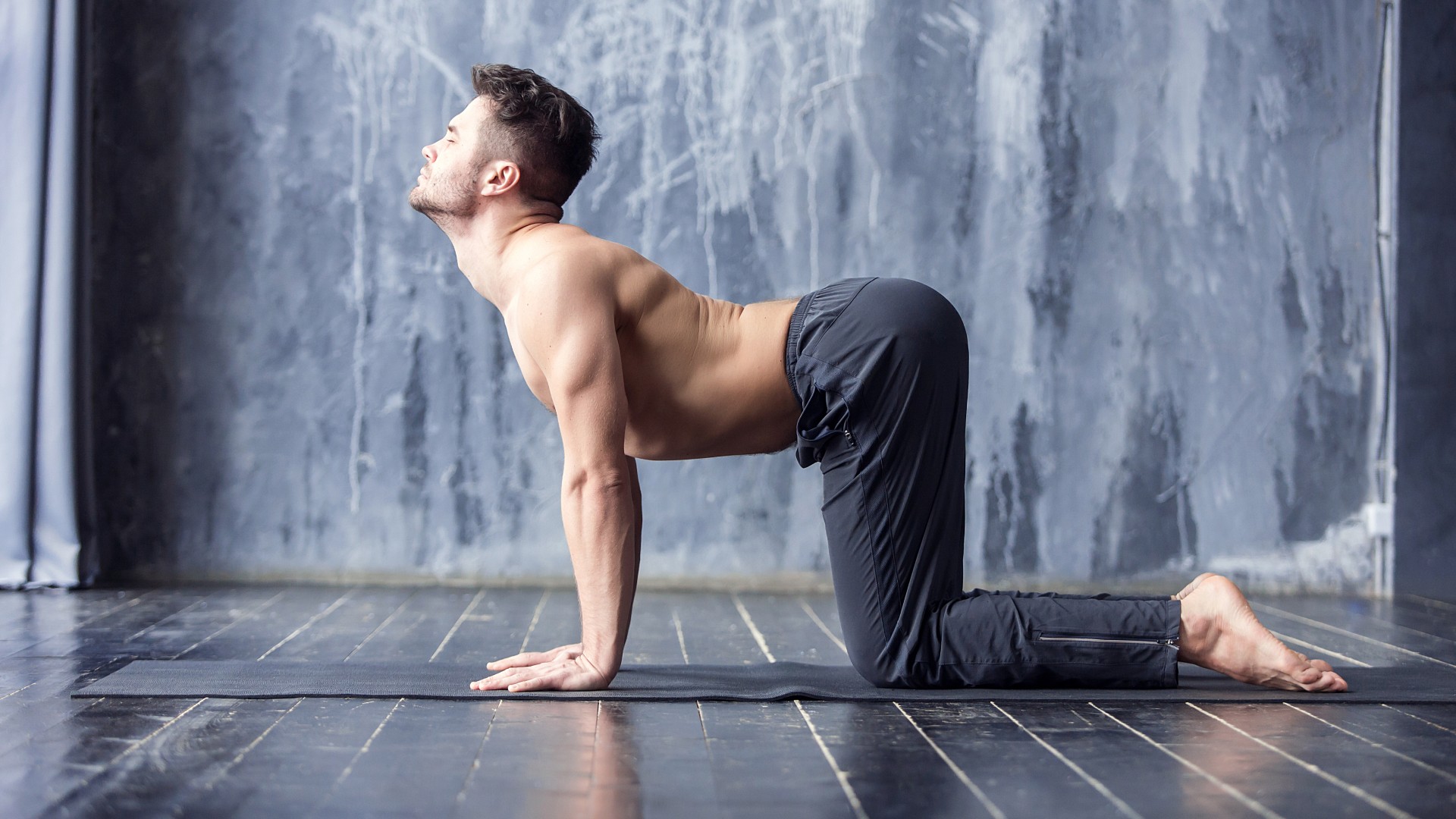
If you’re not a yogi who by now is more familiar with cat-cow than their own family, it’s high time you learned the mobility exercise. Used for spine mobilization during yoga or workout warm-ups, there’s a reason the cat-cow has become a household name in fitness.
To do the cat-cow stretch, unroll one of the best yoga mats and start in a tabletop position on your hands and knees. As you inhale, gently lower your belly button toward your mat and lift your chin toward the ceiling, creating a soft arch in the back (cow); on the exhale, reverse the movement to draw your upper back toward the ceiling and tuck your chin toward your chest (cat).
Moving your spine with this range of motion has plenty of benefits for your body. Here’s how to do cat-cow with proper form, the benefits and common mistakes we see.
How to do Cat Cow correctly
Although I utilize cat-cow often, I’m not a qualified yoga teacher, so I’ve turned to Yoga With Adriene to demonstrate.
How:
- Start in a tabletop position with your shoulders stacked over your wrists, hips over your knees and a neutral spine.
- Position your knees hip-width apart and send your gaze downward.
- Inhale, lower your belly button toward the mat and send your chin, chest and gaze upward — this is the cow pose.
- As you exhale, draw your chin toward your chest and belly button toward your spine, push your upper back toward the ceiling, sending your shoulder blades apart — this is the cat pose.
- Gently transition between cat and cow pose without rushing, moving with control and to the end range of both poses.
- Repeat through several rounds.
What is a Cat Cow good for?
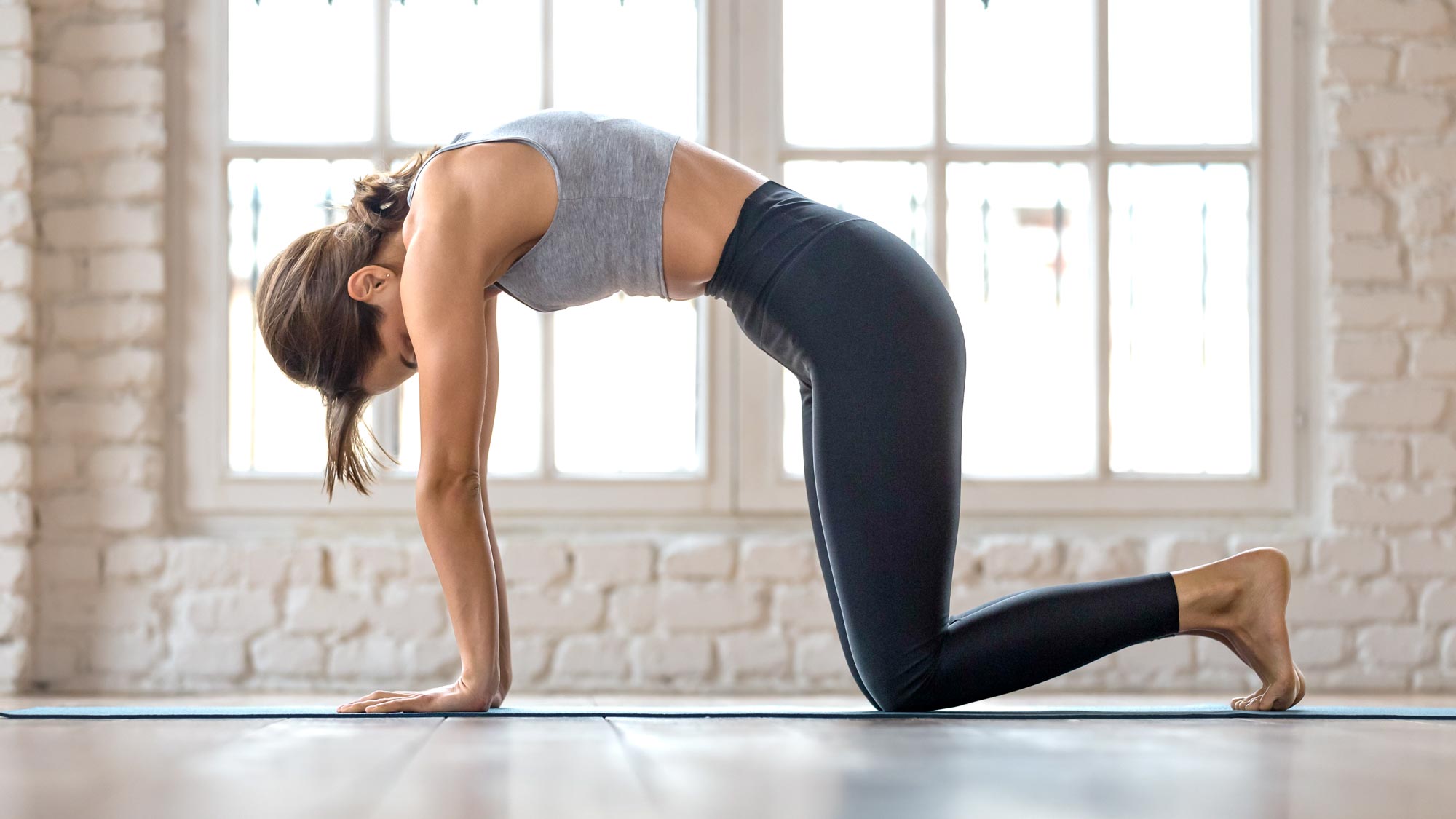
During the cat phase, you create full spinal flexion, whereas in the cow pose, you’re extending through the spine.
Anyone looking to release muscle tension in the back and around the spine can benefit from a cat-cow pose, and it’s a great exercise for yoga beginners. Some yoga instructors also use it to aid symptoms of sciatica.
Sign up to get the BEST of Tom's Guide direct to your inbox.
Get instant access to breaking news, the hottest reviews, great deals and helpful tips.
The mobility exercise helps with spinal flexibility and improves the range of motion in the upper body. In the cat phase, emphasis is on the back body — stretching the back, neck and shoulders — and in the cow phase, the stomach, chest, hips and front of the neck also stretch.
In Sanskrit, “marjari” means “cat” and “bitila” means “cow.” During yoga classes, Marjaryasana Bitilasana may be used to describe the cat-cow pose.
But the exercise isn’t just beneficial in yoga, and adding the exercise to your warm-up routines is an effective way to mobilize your spine before weightlifting or high-impact workouts.
Is Cat Cow safe?
For most people, the cat-cow stretch is safe and effective. However, it’s crucial to move through your entire spine and not limit movement to the lower back and waist.
The cue to draw the belly button downward while lifting the chin sometimes causes people to push through the hips, force the bum upward and press the stomach down, which stresses out the lower back. People might also move excessively in both directions, trying to reach that impressive end range of motion they see instructors doing. Spoiler, your instructor has built that range of motion over years.
Instead, move gently without forcing anything and ensure you're moving from the correct places in your body using the cues above, especially when bringing the chin to the chest or moving toward your lower back. Imagine the movement spreading through your whole back from the tailbone to the neck, and create space through the upper back and shoulders.
If you suffer from neck pain, avoid excessively lifting or lowering your head. Anyone pregnant, post-natal, or suffering from an injury should speak with a qualified medical physician and their yoga instructor first before trying a cat-cow pose.
Benefits of the Cat Cow exercise
Done properly and with slow, controlled motion, the cat-cow delivers a deep stretch, gentle mobilization and helps activate the abdominals.
Don’t rush and aim for at least 5-10 rounds, encouraging a whole range of motion through the spine and pausing at the end range of both phases.
It’s also an effective way to bring movement and breath together as you inhale and exhale through cat and cow. As we know, breathwork is trending as a form of mindfulness (rightly so) and can help alleviate feelings of stress and anxiety.
Moreover, bringing awareness to your spine before a workout could help you keep the spinal alignment in check as you exercise, understanding when you might be excessively flexing or extending.
If you need to modify, place something soft beneath the knees or elevate the wrists and reduce the range of motion until you feel more comfortable. You could also practice seated cat-cow pose by sitting on your mat or in a chair with your hands against a wall or placed behind your head.
Remember to broaden across your shoulders and upper back and pull the shoulders away from the ears without excessively forcing your neck or chin into any positions.
I often perform cat-cow exercises during yoga classes, but it’s recently become more of a staple during my warm-up routines for several rounds. It helps bring me physically and mentally onto my mat, into the space and ready to shelve my day in favor of the workout ahead of me while warming my muscles.
More from Tom's Guide
- This one-minute stretch opens your hips and builds upper body flexibility
- The best exercises to do if you have sciatica
- Forget burpees — you only need 20 minutes and 5 moves to build full-body muscle with this kettlebell workout

Sam Hopes is a level 3 qualified trainer, level 2 reiki practitioner and senior fitness writer at Tom's Guide. She is also currently undertaking her Yoga For Athletes training course. Sam has written for various fitness brands and websites over the years and has experience across brands at Future such as Live Science, Fit&Well, Coach, and T3.
Having worked with fitness studios like F45 and Virgin Active, Sam now primarily teaches outdoor bootcamps, bodyweight, calisthenics and kettlebells. She also coaches mobility and stretching-focused classes several times a week and believes that true strength comes from a holistic approach to training your body.
Sam has completed two mixed doubles Hyrox competitions in London and the Netherlands and finished her first doubles attempt in 1:11.

